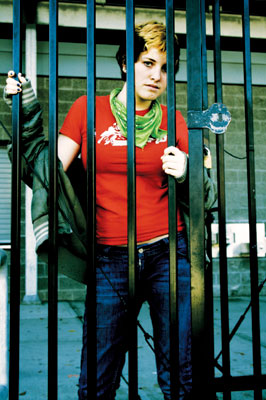All Nonfiction
- Bullying
- Books
- Academic
- Author Interviews
- Celebrity interviews
- College Articles
- College Essays
- Educator of the Year
- Heroes
- Interviews
- Memoir
- Personal Experience
- Sports
- Travel & Culture
All Opinions
- Bullying
- Current Events / Politics
- Discrimination
- Drugs / Alcohol / Smoking
- Entertainment / Celebrities
- Environment
- Love / Relationships
- Movies / Music / TV
- Pop Culture / Trends
- School / College
- Social Issues / Civics
- Spirituality / Religion
- Sports / Hobbies
All Hot Topics
- Bullying
- Community Service
- Environment
- Health
- Letters to the Editor
- Pride & Prejudice
- What Matters
- Back
Summer Guide
- Program Links
- Program Reviews
- Back
College Guide
- College Links
- College Reviews
- College Essays
- College Articles
- Back
Juvenile Gang Violence
Juvenile (those under the age of 18) offenders have been an issue since before the Americas were first seen by Europeans, and still are today, only now they mostly take the form of juvenile gangs. In fact, 47 percent of arson crimes involve juveniles, 38 percent of vandalism crimes involve juveniles, 28 percent of disorderly conduct crimes involved juveniles, and 27 percent of both robbery and burglary crimes were involving juveniles (Watkins 14). These offenders have been let off easy since they are children and teens, not adults, but this sort of punishment is not truly suited for them.
Juveniles join gangs for different reasons. One large reason in high-crime neighborhoods is that they are harassed by the gangs. The juveniles sometimes have to pass through gang neighborhoods during their daily routine and run into gangs then. The gang harasses them into joining, and sometimes the juvenile will give in to the pressure. Other times, they seek protection from the gang, and the juvenile will turn to the rival gang for protection. However, this is not the only reason for young teens and children to turn to delinquency and gang violence. The juveniles involved in gang activity sometimes come from broken homes, and join gangs seeking a sort of “family” to belong to. Some children are born to parents that are in gangs, and are raised to be gangsters. They are “blessed” into the gang at a young age, and the gang becomes part of the child’s identity. There are other more scientific reasons involving genetics, but the main thing to know is that there are no simple answers. No one can truly predict something like this, since all of these juveniles are different in their experiences and personality (Parks 36-42)
Some of the most common methods in delivering justice for crimes committed by juveniles start after the fact, such as disciplinary action. But some, such as recognizing the signs of a child joining a gang and taking tactics of prevention, happen before. Most often the parent does not find out until the crime has been committed, and from there the child receives an easy sentence. Juveniles, as opposed to adults, are tried less to find punishment and more to find rehabilitation strategies. The thought process behind this is that the juveniles have personalities and thoughts that can still be changed, despite that at the age most juveniles are convicted of crimes their minds have mostly developed into what they will later be. Juveniles also receive special treatment in the form of their parole. Adult parole is primarily based on watching for any illegal activities or suspicious behavior. However, juvenile parole is based primarily on reintegration of the juvenile into their community and helping to get them on the right track again (PBS).
The only real way to truly get these juveniles onto the path to success they had strayed from is this; the first offense can be treated as it is currently treated, with a softened blow. But all safeties given to juveniles that are not given to adults should be taken away from then on. If the juvenile offenders are informed that they will face much harsher punishment they are less likely to continue adding on to their criminal records; and while many say that these punishments, especially life sentences without parole and death penalties, are too harsh for juveniles, they are laughably incorrect. The juvenile mind is fragile, and once it is broken it is highly unlikely it will be fixed. These penalties are fair for adults who commit the same crimes, and if the delinquents are willing to commit crimes in order to seem adult-like, then they should know what real punishment is.
Accept it if you will, but the real problem is at hand: the juvenile crime is too high, and it affects everyone. The only way to stop it is with brute force. If juveniles know the full extent of the long arm of the law, they will not attempt to bite the hand that feeds them. If everyone bands together, we can bring juvenile gang members to justice and back into society.

Similar Articles
JOIN THE DISCUSSION
This article has 0 comments.
